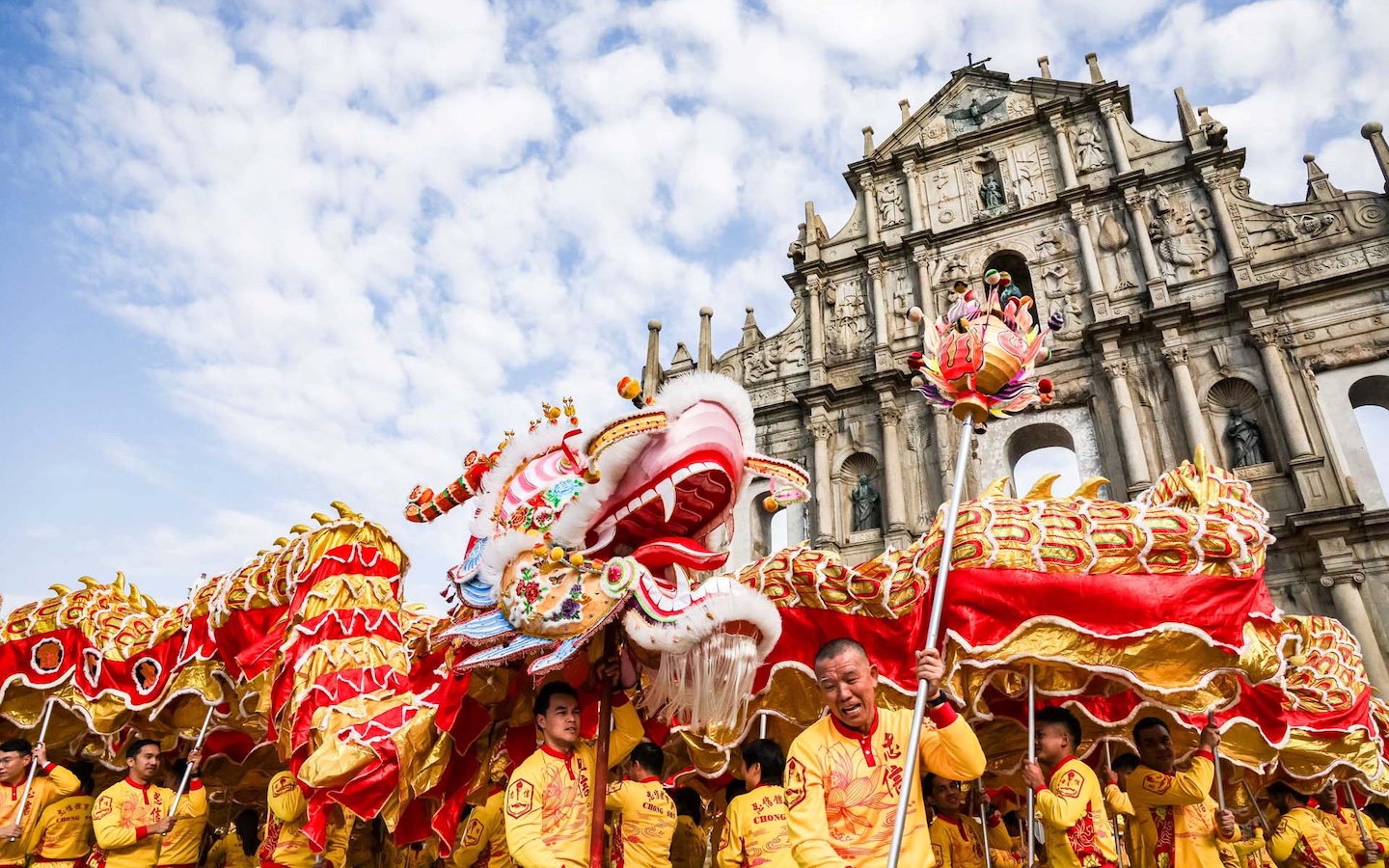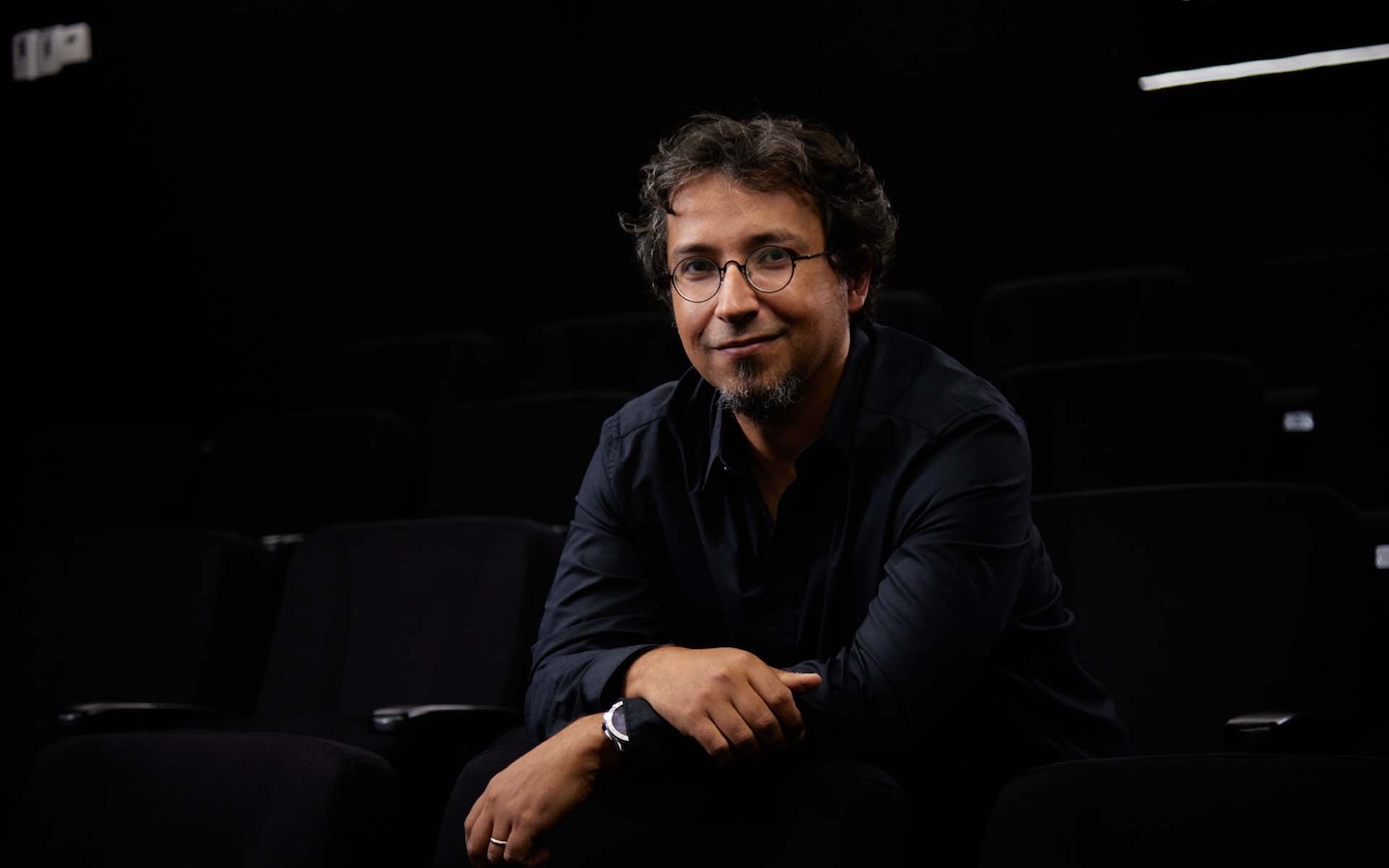Scholar and painter Ung Vai Meng has devoted more than 20 years to studying commemorative Chinese portraiture. His work culminates in Ancestor Portraits in the Ming and Qing Dynasties, a definitive book on the genre published last year.
One day in 1997, Ung Vai Meng was walking along Rua de São Paulo at the foot of St Paul’s Ruins. Suddenly, he caught a glimpse of Chinese ancestor portraits in one of the many antique shops that line the street. In that instant, Ung felt hooked.
“I’m a painter, so I am sensitive to colours, motifs and imagery,” he recalls. “They are beautiful, especially the portraits of children at home. I returned to the antique shops from time to time and gazed at the portraits. But I couldn’t find any books on them. I wondered, ‘How come no one pays attention to these paintings?’”
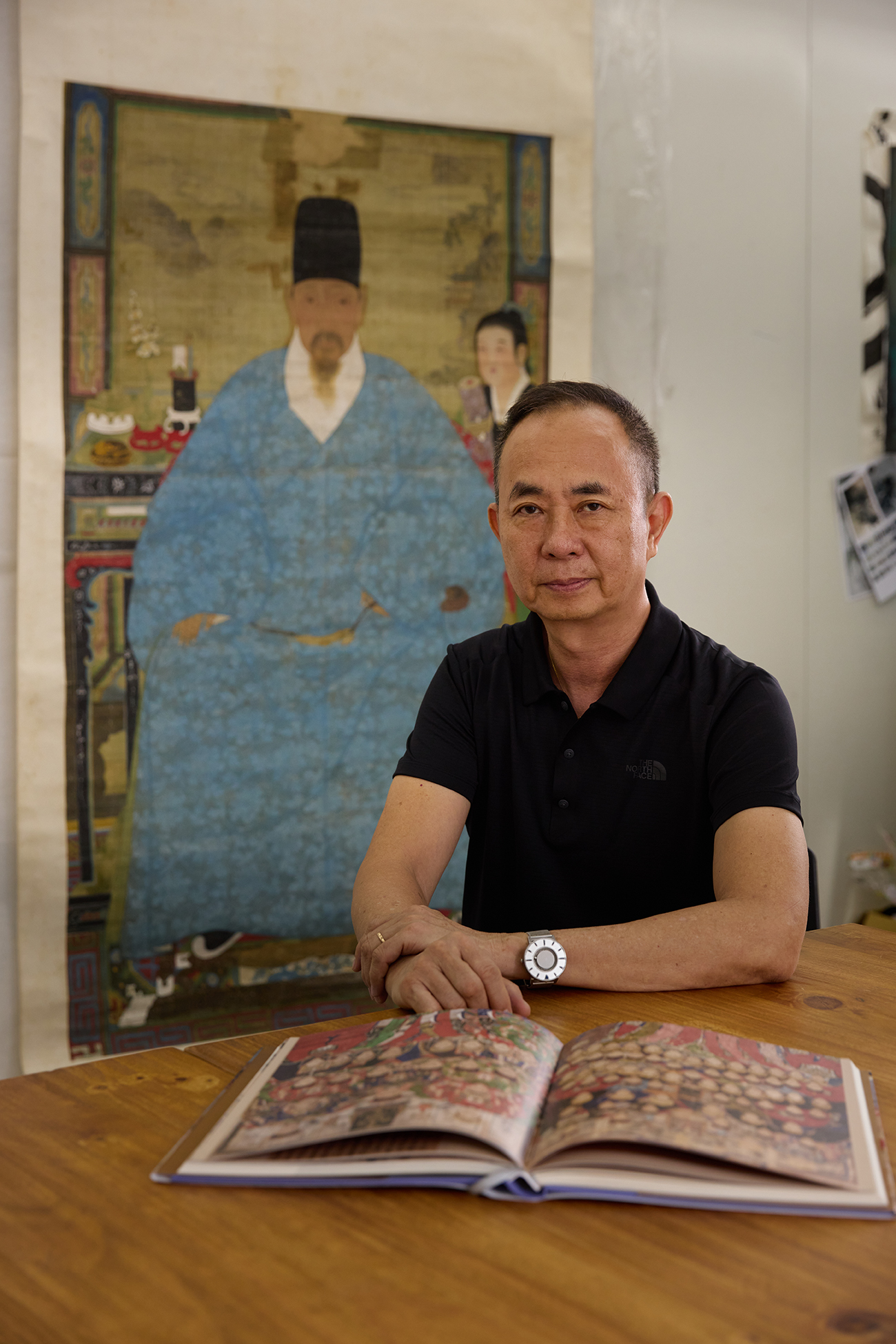
That day marked the beginning of Ung’s decades-long exploration of Chinese portraits. Since then, the revered painter and art historian has become an expert on the genre while leading the Macao Museum of Arts (MAM), the Cultural Activities and Recreation Department of the Civic and Municipal Affairs Bureau and the Cultural Affairs Bureau (IC) over the past 20 years.
In June 2020, his work culminated in a Chinese-language illustrated book, Ancestor Portraits in the Ming and Qing Dynasties (《明清祖先像圖式研究》), which serves as a definitive guide to the art form. A testament to Ung’s tireless investigation of this centuries-old genre, the 256-page book showcases many examples of Chinese ancestor portraits alongside art theory and historical context. Ung also dives into provincial painting techniques, symbols, motifs and history.
“I had a lot of questions and tried to get the answers from the paintings,” says Ung, who estimates that he studied more than 2,000 ancestor paintings during his research. “The portraits also tried to tell me many tales.”
A Lifetime Achievement
Born and bred in Macao, the 64-year-old painter has spent much of his adult life practising Chinese and Western art. He studied sketches and watercolours under respected painter Kam Cheong Ling, who died in 1991, and completed a painting course at Ar.Co Centro de Arte e Comunicação Visual, an independent school in Lisbon, in 1992.
In 1997, two years before Ung became the director of the MAM, he began collecting ancestor portraits from local antique markets. At the same time, he was studying for his master’s in traditional Chinese painting theory at the Guangzhou Academy of Fine Arts in 2002.
“I started researching ancestor portraits during my master’s because I had so many questions: ‘Why are the female ancestors’ feet covered? Why are male ancestors dressed in Qing-dynasty robes, but the wives are in Ming-dynasty styles? Why are the women dressed in different colours?’” he recalls.
During this time, Ung met art dealer Zhan Qing He, who taught the scholar more about these portraits. Ung went on to earn his PhD in art history at the Chinese Academy of Art eight years later in 2010, during which he dove even deeper into this lesser-studied art genre.
Typically, Chinese paintings focus on landscapes and flowers, says Ung. Unlike Western paintings, they rarely depict realistic scenes, which is what makes these portraits so special. The style dates back to the Ming dynasty (1368-1644), when China experienced an economic boom, and the arts flourished. During this era, Italian Jesuit painters visited the mainland, bringing many techniques that influenced Chinese painting.
When the Manchu conquered the country and established the Qing dynasty, which ran from 1644 to 1912, the new empire invited further cultural exchange between East and West. Most notably, photography emerged, which Ung believes contributed to the realism seen in Chinese ancestor portraits.
As an act of filial piety, wealthy families often displayed the paintings at home to bless their ancestors and descendants. They also showcased family portraits in ancestral halls during private commemorative rituals, such as the anniversary of an ancestor’s birth or the Qingming festival.
After the fall of the Qing dynasty – when many Chinese artworks were stolen or exported – these portraits began appearing in antique shops, museums and art galleries in Western countries.
“These Chinese ancestor paintings are so realistic, but there is little research on them,” Ung adds of his motivation to study them.
Ung’s recently published book fulfils a lifelong dream and serves as an extended version of his doctoral thesis. “As I have gathered a lot of information, I felt obliged to put them together for future scholars,” he says. “I was really hoping to publish the book before I died. Otherwise, it would be a major regret. Once I retired [from IC in 2017], I got to work on it.”
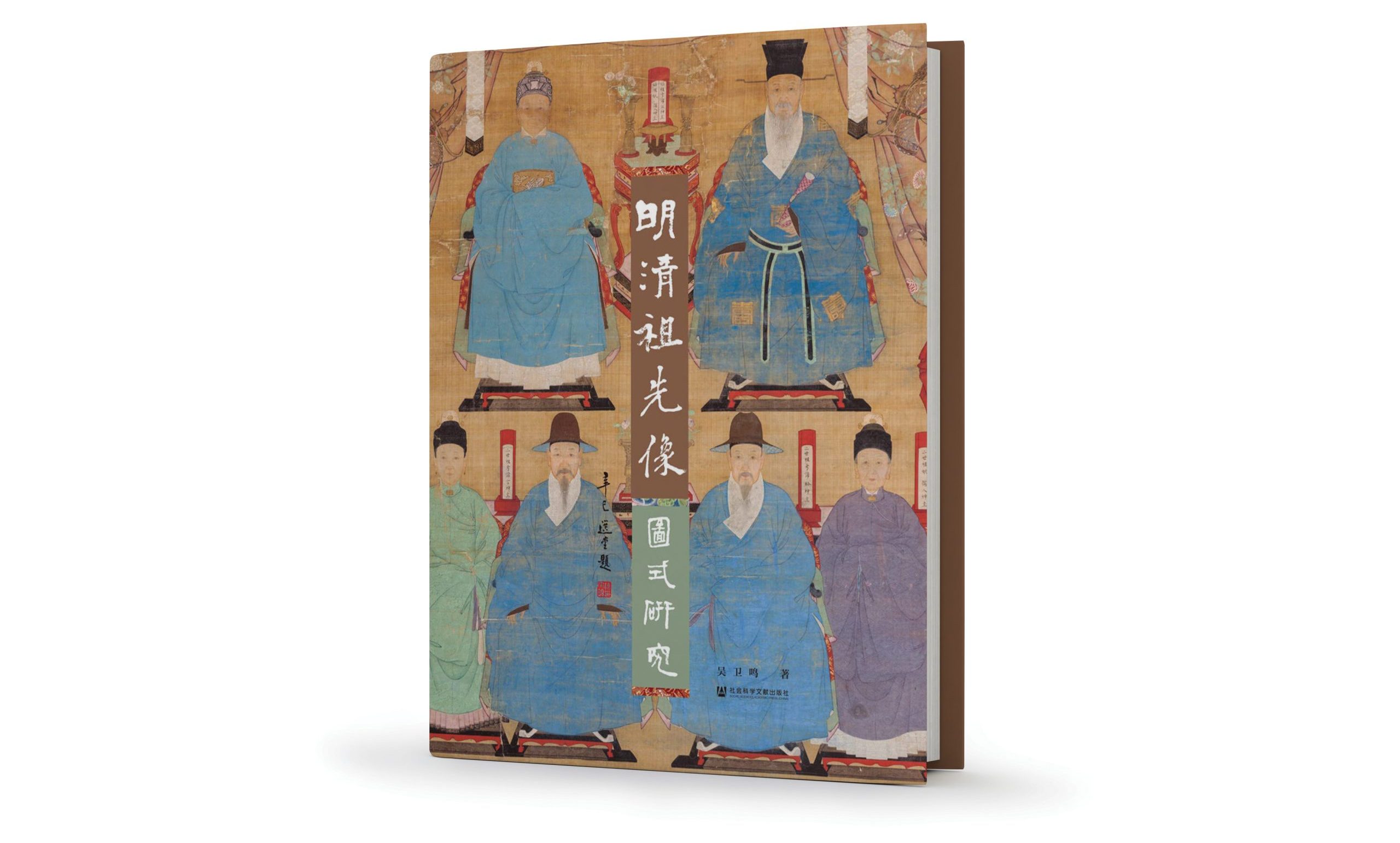
Uncovering Chinese Portraits
Curious, hard-working and passionate, the scholar has covered a lot of ground during his 20 years of research. “I read books written by many experts, learned about the genealogies of Chinese clans, gazed at the portraits and visited ancestral halls and their surroundings,” he says.
He also spoke to various experts to learn how they viewed and analysed the portraits in a historical and cultural context. He visited museums and galleries in four Western countries, such as the British Museum and the Victoria and Albert Museum in the UK, the Royal Ontario Museum in Canada, the National Museum in Prague and the Freer Gallery of Art in the US.
In addition, he ventured through numerous Chinese provinces, including Liaoning, Shandong, Shangxi, Guizhou, Sichuan, Hubei, Yunnan, Guangdong and Fujian. “I backpacked through cities and the countryside to explore museums, galleries, antique markets, villages, and ancestral halls [in search of the portraits],” he says. “My journey was enriching, not only for my research but also for my life.”
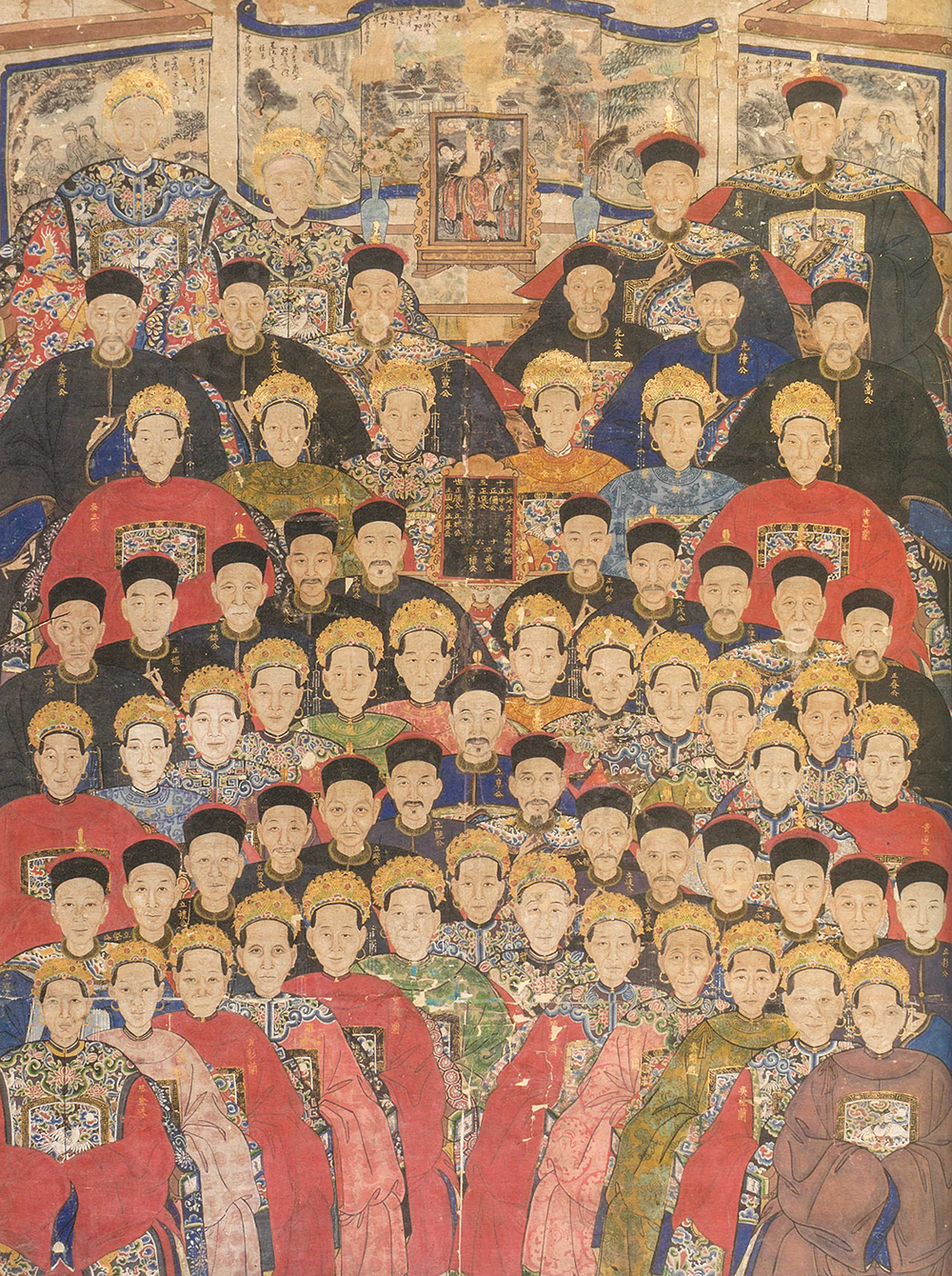
The first stop of each research trip was typically ancestral halls. “I started with Fujian province where many buildings were established for worship in their Hakka villages, such as tulou [an enclosed earthen structure with an ancestral hall, built to house multiple clan families] and Hakka houses,” he recalls. “Ancestral halls are important buildings, where people worship their deceased forebears. In these rituals, ancestor portraits play a key role.”
During the course of his research, Ung visited more than 300 ancestral halls and took photos of portraits he found along the way. If he came across an extraordinary portrait, he often bought it for his collection. “I tried to collect some special portraits,” Ung says, adding that each cost anywhere from a few thousand to MOP 20,000. “If I missed the chance, I feared I wouldn’t be able to find them again.”
“Once, I went with Zhang, the art dealer, to collect some paintings he had bought from a seller in Fujian. The portraits were so valuable, we were worried about getting robbed,” says Ung, recalling his adventures. “So, we met the seller in a disco, where we had to view the portraits with torches.” If Zhang made the transaction in a dimly lit environment, they felt it would draw less attention.
After Zhang made the purchase, Ung stayed behind in Fujian and spent a night in a tulou. “The sky seemed so low; it felt like I could touch it. I could hear the cicadas and pigs; everything was so natural,” he says. “That feeling is what one calls ‘the unity of man and universe.’”
Communication, Dignity, Religion
In his ambitious art book, Ung features documentation, photos, illustrations and discussions, alongside interesting interviews with scholars and art dealers in mainland China, Macao and Hong Kong. “I want to explore the stories and facts about these ancestor portraits from multiple angles,” he says, adding that his research trips were partially funded by publisher Social Sciences Academic Press (China).
The book opens with a dramatic visual – a beautifully detailed group portrait of a man sitting above two women (pictured, left). The dignified trio don splendid costumes and highly realistic expressions, which can be attributed to photographic influences in the late Qing dynasty.
According to Ung, the painter likely referenced a photograph to create the subjects’ faces, while their costumes and accessories signal their social status. In the Qing dynasty, officials had various tiers of social and political ranks – each tier must wear a robe of specific colours and motifs.
“This portrait is fascinating. To draw a face in three dimensions – it requires light and shadow, which represent yang and yin in Chinese cosmology,” he explains. “Yin suggests death; yang, life.”
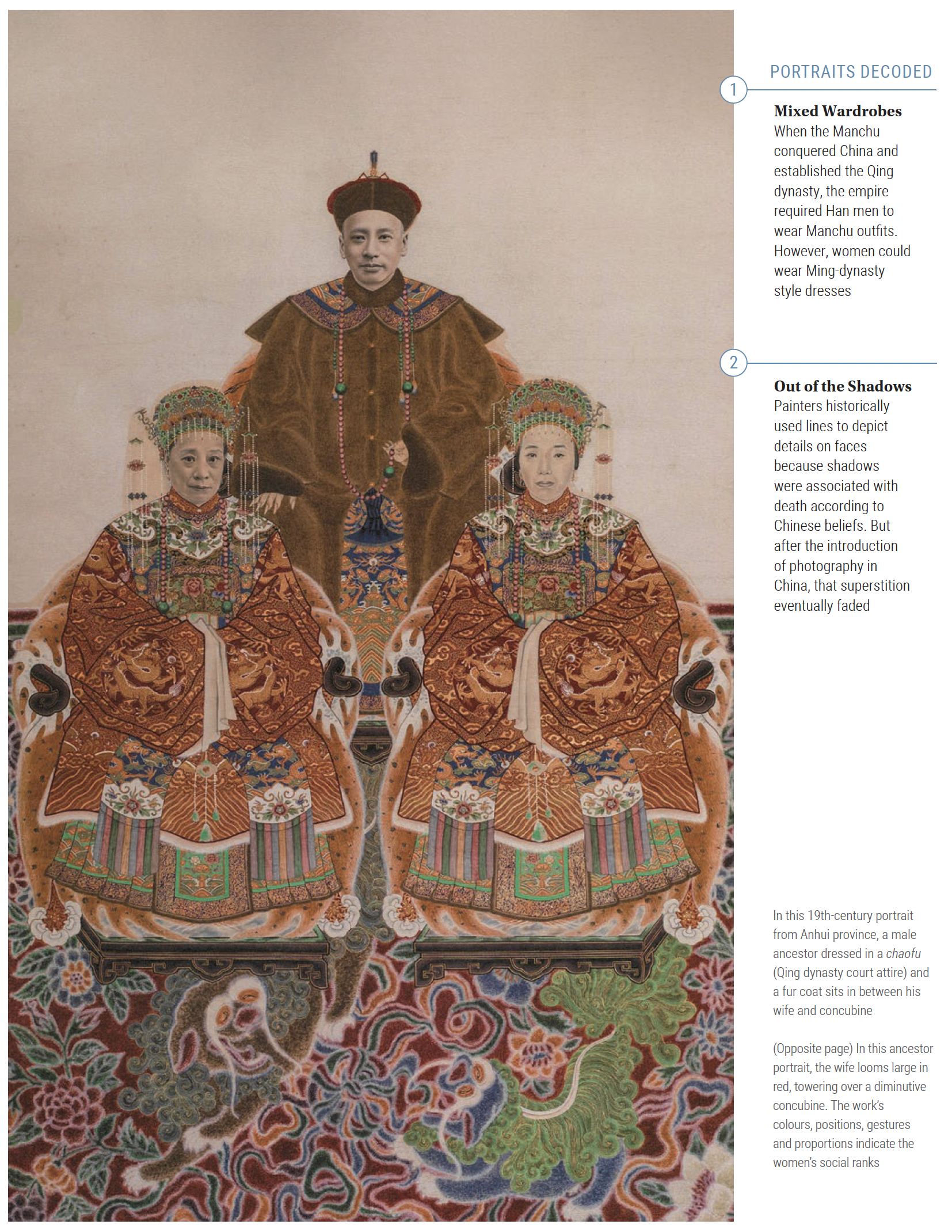
In the old days, he continues, Chinese society did not like to see a shadow on a person’s face because it’s associated with yin, and thus, death. “For a long time, traditional Chinese painters used lines to show the details of a face,” says Ung. “But after the cultural exchange with the West and the introduction of photography during the late Qing dynasty, people started changing their minds about the application of light and shadow.”
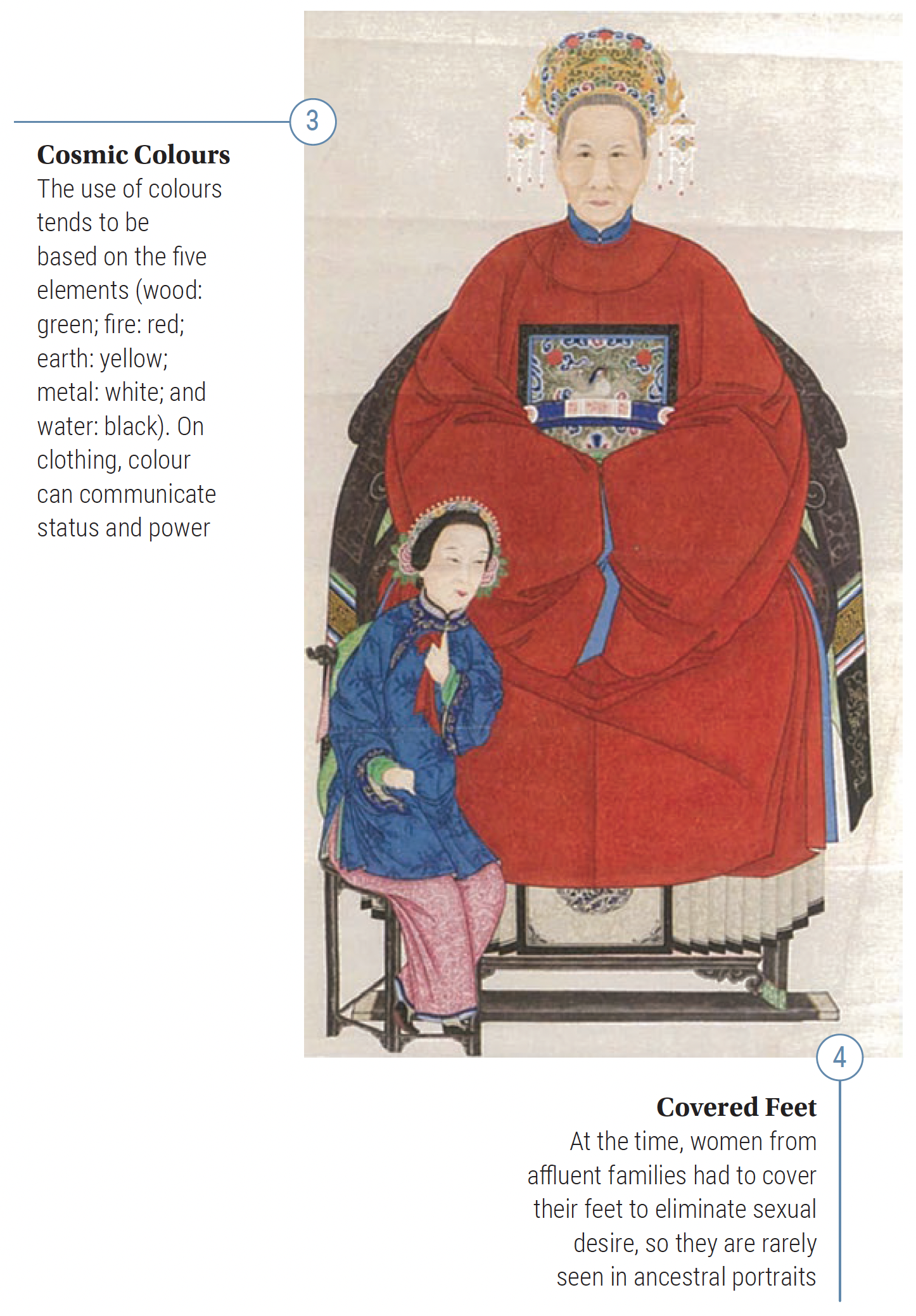
Another illustrated portrait in the book sheds light on the use of colour in Chinese portraiture. The painting depicts two women: one sits in a red robe on a quanyi (an armchair with a rounded back) with a much smaller woman standing to her right.
The colour, gestures, proportions and positions impart information about the women’s ranks. “In Chinese paintings, green, red, yellow, white, and black are the main colours,” explains Ung, adding they align with the five Chinese elements. In the image pictured above, the woman in red is the wife, while the dramatically smaller woman in pink trousers is her husband’s concubine. “Pink is a mixture of red and white, so it is a secondary colour, used to show her lower rank.”
What’s more, the wife’s position on the left (painting on the opposite page) symbolizes superiority. “In many ancestor group portraits, the superior ancestor always lines from their left to right,” adds Ung.
He also draws attention to the wife’s covered feet. “In old times, women from affluent families had their feet bound, while working women didn’t,” he notes. “In these portraits, the female ancestors’ feet are covered to [eliminate] sexual desire. Once a woman was married, she stayed at home and was hardly seen by others.”
Readers may also notice the intense gazes captured by Chinese portraiture. “Ancestors usually sit in a quanyi chair and face their worshipping descendants. The subjects look back at the viewers – it’s a communication between ancestors and their descendants,” says Ung.
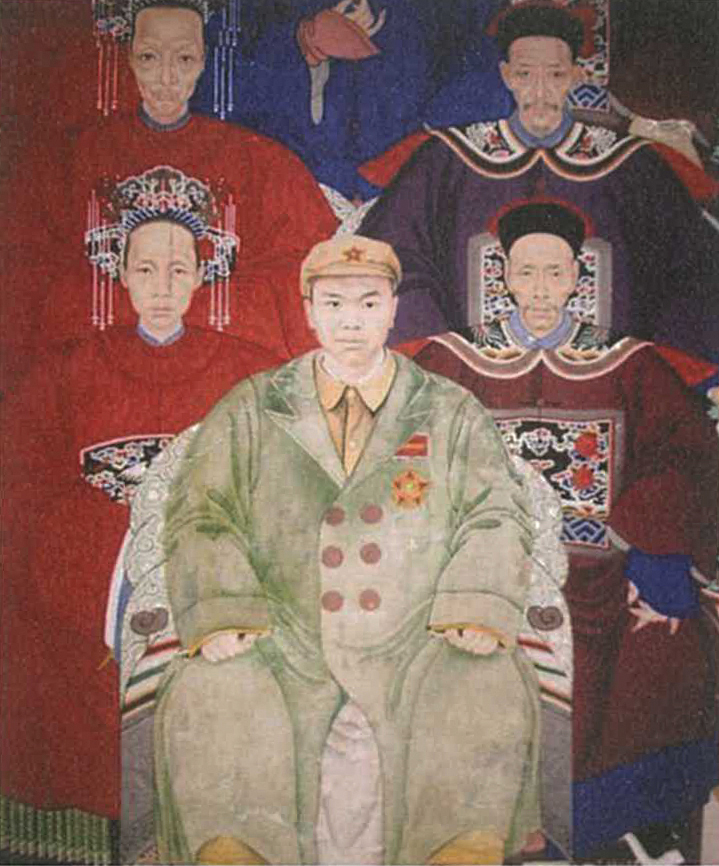
The position also carries religious symbolism, while the type of chair speaks to Chinese cosmology. “The quanyi chair is deliberate. It makes the subject look dignified, almost towering, while the round back and rectangular footrest demonstrate the Chinese concept of ‘round heaven and square earth,’” adds Ung. “Their upright sitting positions are like those of Buddha. Ancestor portraits carry three significant [qualities]: communication, dignity and religion.”
Another highlight of Ung’s book is a 20th-century group portrait depicting a man wearing a modern military uniform and badge of honour. He’s seated in front of other family members dressed in ancient clothing.
“I’ve done a lot of research on that badge. It shows that the man fought and died in the Korean War, resisting the US aggression and aiding Korea,” says Ung. “While he is not dressed in ancient clothing, the purpose of the painting – remembering one’s forebears – still remains.”
While these portraits were once privately worshipped to recollect a family’s beloved and deceased ancestors, Ung hopes to share their stories with greater society. “I hope to draw academics and scholars’ attention to this excellent but ignored genre of paintings. They have a rich cultural context and unique artistic values,” says Ung. “I hope my research can fill in the blanks. My next dream is to introduce these portraits to the Western world.”
Art in motion
Ung Vai Meng, along with curator João Miguel Barros and artist Chan Hin Io, will represent the city at the Venice Biennale 2022. Out of 24 exhibition proposals by 60 curators and local artists, their group exhibition, “Allegory of Dreams”, stood out. Blurring the boundaries between dreams and reality, the exhibition will explore Macao’s distinct collective history and cultural globalisation through photography, sculpture, video and performance art.

